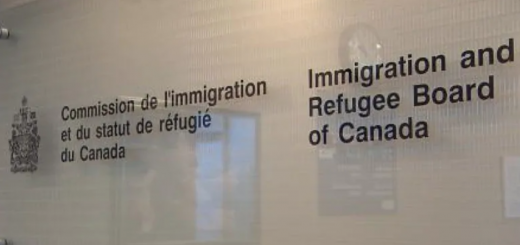Is the Right to Strike Protected by the Charter? A Review of R v Saskatchewan Federation of Labour
Since 2001 there has been considerable turmoil at the Supreme Court of Canada (“SCC”) surrounding collective bargaining rights under the Charter. During this period, two significant decisions have appeared to shift the Court towards recognizing a constitutional right to collective bargaining. As a result, a trial judge in Saskatchewan took the audacious step of assuming that the SCC would no longer abide by its earlier position that the Charter does not protect the right to strike. The Court of Appeal overruled him in R v Saskatchewan Federation of Labour, 2013 SKCA 43 [Saskatchewan Federation], taking a principled stand that the lower court ruling violated the doctrine of stare decisis.
The SCC has given leave to appeal in Saskatchewan Federation, and its decision may push the boundaries of collective bargaining rights even further. Conversely, the Court may vacillate and add to the confusion that has been created by its latest decisions in this area. Regardless of the outcome of the appeal, Saskatchewan Federation is an excellent piece of judicial writing and worth reading for its own sake.
Background to the Appeal
In 2008, the Government of Saskatchewan enacted the Public Service Essential Services Act, SS 2008, c P-42.2, which curtails the right of public servants to strike. This law was challenged by the unions, who won a significant ruling from a judge of the Court of Queen’s Bench, finding that the Act was of no force or effect because it violated the right to freedom of association under section 2(d) of the Charter, and was not saved by section 1. The Court of Appeal summarized the trial judge’s reasoning as follows:
He stressed that strikes and the threat of strikes are what motivates the parties to a labour dispute to negotiate in good faith. He explained this as follows: “Labour law practitioners understand the critical role played by a strike in the collective bargaining process. They know that it exerts pressures on both sides to resolve a dispute.”… This perspective led the trial judge to conclude that the right to strike is a necessary condition of meaningful collective bargaining (Saskatchewan Federation, para 22).
The SCC had ruled in 1987 that the right to strike is not protected, but the Court has said nothing explicit about the subject since then. The trial judge felt that this is a stale precedent and that more recent judgments of the SCC have implicitly overruled its earlier position.
The Evolving Jurisprudence of the Supreme Court of Canada
The Saskatchewan Court of Appeal’s judgment was delivered by Richards J.A., writing for a unanimous five-judge panel. One aspect of the court’s decision that will be a boon to law students is a very clearly written summary of the SCC’s past decisions in this field.
In 1987, the SCC decided three cases (a.k.a. the Labour Trilogy) in which it ruled that there was no constitutional right to strike. The Court was badly split on many points—even on the question of whether the right to freedom of association in the Charter implied a right to collective bargaining. The Court leaned towards a narrow view that freedom of association was an individual right that did not confer any rights to the union that was formed through the act of association.
That view changed radically in 2001, with Dunmore v Ontario, [2001] 3 SCR 1016 [Dunmore]. Ontario’s Labour Relations Act, 1995, SO 1995, c 1, Sch A [LRA], excluded agricultural workers from the protection that it offered to collective bargaining. Unionization was legal long before the LRA, but the right to form unions was a tenuous benefit in the era of “liberal voluntarism.” When there is no legal obligation on the part of the employer to recognize those rights or to bargain, unions face an uphill struggle.
In Dunmore, the Court recognized that freedom of association had to be read as guaranteeing the pursuit of common goals. Those common goals extend to some collective bargaining activities, including the right of employees to organize and to make submissions to their employers. Excluding agriculture workers from the LRA was tantamount to the government encouraging employers not to deal with their unions.
The next major case, Health Services and Support – Facilities Subsector Bargaining Assn v British Columbia, [2007] 2 SCR 391 [BC Health Services], extended the rights recognized in Dunmore. The BC government, faced with fiscal problems, passed legislation that invalidated significant provisions of its collective agreements with health care workers, and effectively precluded meaningful collective bargaining on a number of issues. The SCC ruled that this legislation was invalid because it violated the process of collective bargaining.
The two cases just mentioned entrenched significant collective bargaining rights. More recently, the SCC backtracked in Ontario v Fraser, [2001] 2 SCR 3 [Fraser]. To comply with the Dunmore decision, the Ontario government had passed a new law, outside the LRA, to govern collective bargaining in agriculture. That law was challenged on the grounds that it was too weak and did not require employers to bargain in good faith. The Ontario Court of Appeal, placing emphasis on the enhanced right to collective bargaining in BC Health Services, ruled that the legislation was invalid.
In Fraser, the SCC overruled the Court of Appeal and held that Ontario’s half-hearted legislation was sufficient to comply with its ruling in Dunmore. The SCC appeared to water down its earlier decision. It took the position that freedom of association protects only the right to a general process of collective bargaining, and not to a particular model of how it should be done.
The Two Prongs of the Saskatchewan Court of Appeal’s Ruling
The Saskatchewan Court of Appeal held that the lower court ruling could be overturned simply because it was a violation of the principle of stare decisis:
This line of argument self-evidently involves a novel view of the doctrine of stare decisis in that it suggests a lower court need not follow the precedent of a higher court if it appears that the higher court will overrule the precedent in question when and if it has the opportunity to do so… the idea of ignoring a precedent on the strength of a prediction that it will be overturned is a largely heretical notion which has no apparent basis in Canadian case law (para 48).
That should have been enough to dispose of the appeal, but the court could not resist following along the path that the trial judge had set. It went on to review the SCC’s jurisprudence, as summarized above. It concluded that, given the mixed picture, and particularly the recent decision in Fraser, there was no reliable basis for predicting how the SCC would rule on whether the right to strike is protected:
That high level of certainty is not present here. Dunmore, Health Services and Fraser do, of course, go some considerable distance toward upsetting the logic underpinning what the Labour Trilogy had to say about the constitutional status of the right to strike. Nonetheless, the implications of those recent decisions are less than wholly clear (para 52).
The court placed particular emphasis on the message from the latest case:
Fraser appears to say that a mechanism for resolving bargaining impasses (regardless of what institutional form it might take) is not part of what s. 2(d) requires in the context of collective bargaining. It would seem to follow, as a result, that the strike (a particular institutional mechanism for resolving impasses) is not comprehended by s. 2(d) (para 59).
Anticipating that the instant case will reach the SCC, the Saskatchewan Court of Appeal offered some advice on an option for the higher court:
It is entirely possible (some would say desirable) to define the substantive reach of s. 2(d) broadly enough to include the right to strike and to then use s.1 of the Charter to assess the constitutional validity of statutory qualifications imposed on strike action. This sort of approach to the scope of constitutional guarantees has been used by the Supreme Court in relation to other s. 2 freedoms, perhaps most notably freedom of expression (para 66).
The SCC was quite divided in Fraser, with four widely diverging opinions. Two of the justices argued that BC Health Services had been wrongly decided and should be overruled. Saskatchewan Federation will give the Court an opportunity to add some clarity to the record. Perhaps, with the passage of a few years, a new consensus will emerge. The Saskatchewan Court of Appeal has done the SCC a service by setting out the alternatives with considerable precision.








Join the conversation